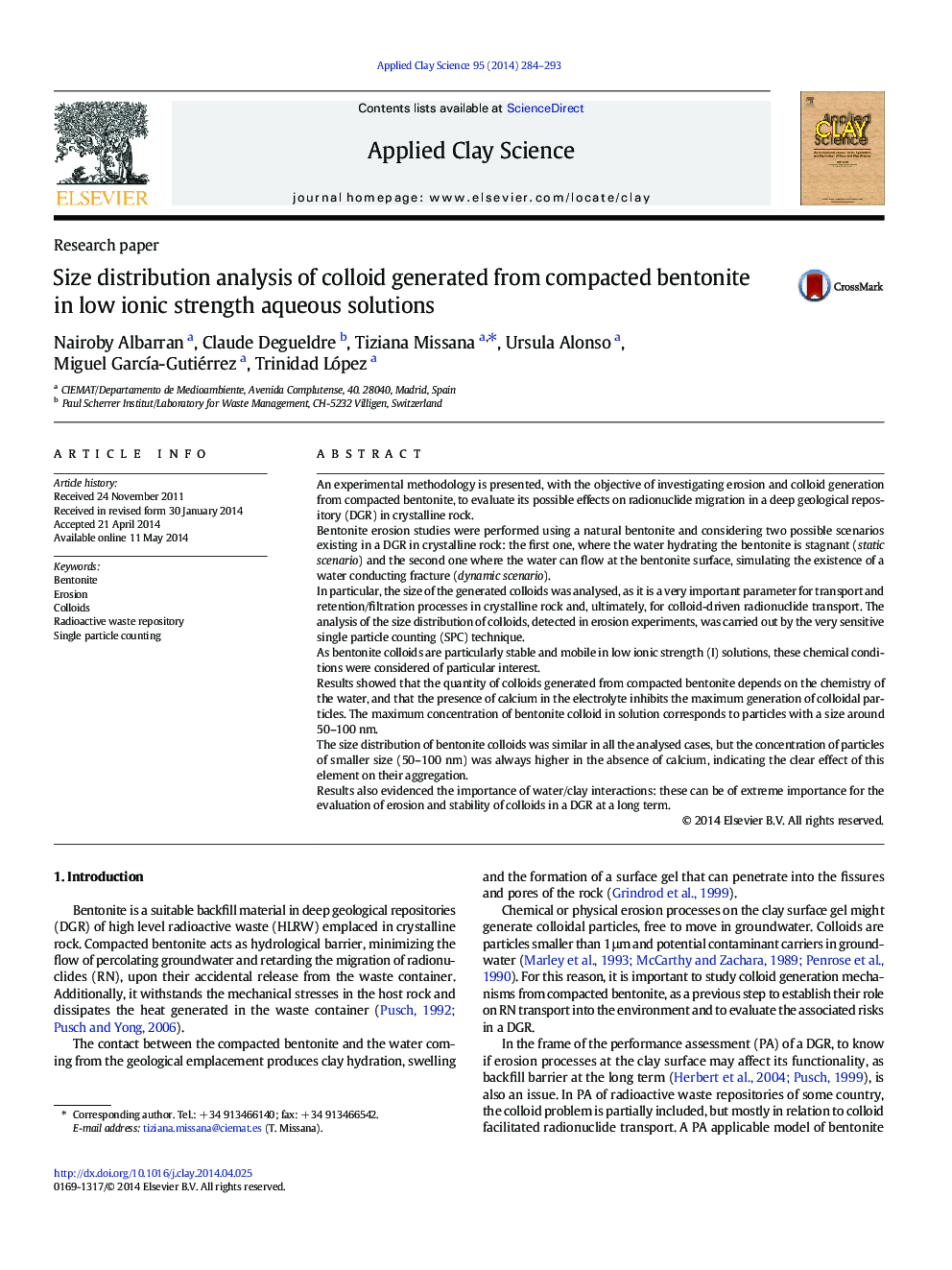| Article ID | Journal | Published Year | Pages | File Type |
|---|---|---|---|---|
| 1694820 | Applied Clay Science | 2014 | 10 Pages |
•At low ionic I, colloids can be eroded from compacted and confined bentonite.•Erosion depends on water chemistry: Ca inhibits the maximum generation of particles.•Bentonite colloids show a maximum concentration in the size range of 50–100 nm.•Water–clay interactions are critical in bentonite colloid erosion at the long term.
An experimental methodology is presented, with the objective of investigating erosion and colloid generation from compacted bentonite, to evaluate its possible effects on radionuclide migration in a deep geological repository (DGR) in crystalline rock.Bentonite erosion studies were performed using a natural bentonite and considering two possible scenarios existing in a DGR in crystalline rock: the first one, where the water hydrating the bentonite is stagnant (static scenario) and the second one where the water can flow at the bentonite surface, simulating the existence of a water conducting fracture (dynamic scenario).In particular, the size of the generated colloids was analysed, as it is a very important parameter for transport and retention/filtration processes in crystalline rock and, ultimately, for colloid-driven radionuclide transport. The analysis of the size distribution of colloids, detected in erosion experiments, was carried out by the very sensitive single particle counting (SPC) technique.As bentonite colloids are particularly stable and mobile in low ionic strength (I) solutions, these chemical conditions were considered of particular interest.Results showed that the quantity of colloids generated from compacted bentonite depends on the chemistry of the water, and that the presence of calcium in the electrolyte inhibits the maximum generation of colloidal particles. The maximum concentration of bentonite colloid in solution corresponds to particles with a size around 50–100 nm.The size distribution of bentonite colloids was similar in all the analysed cases, but the concentration of particles of smaller size (50–100 nm) was always higher in the absence of calcium, indicating the clear effect of this element on their aggregation.Results also evidenced the importance of water/clay interactions: these can be of extreme importance for the evaluation of erosion and stability of colloids in a DGR at a long term.
Graphical abstractExperimental set-up for bentonite colloid generation experiments under (a, b) static and (c, d) dynamic conditions.Figure optionsDownload full-size imageDownload as PowerPoint slide
